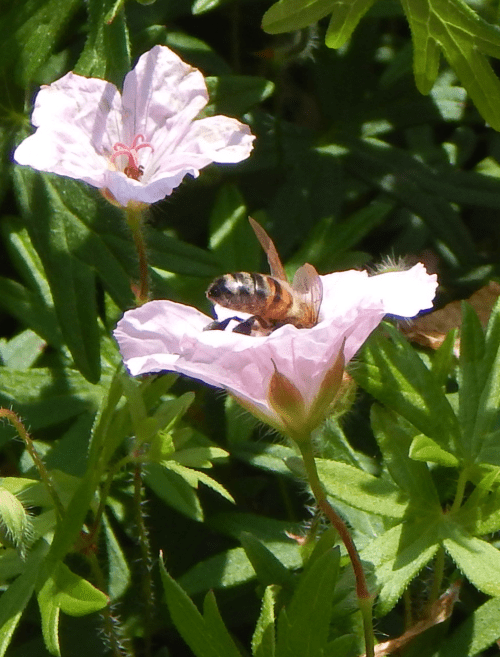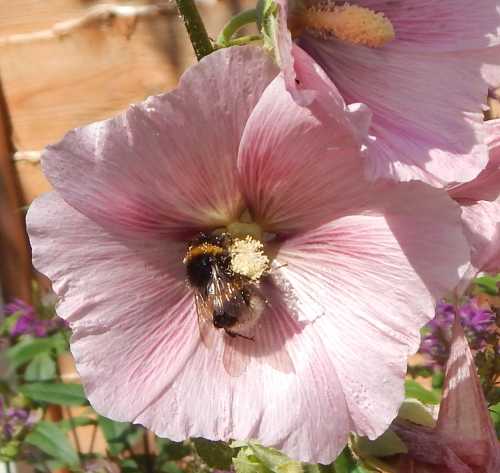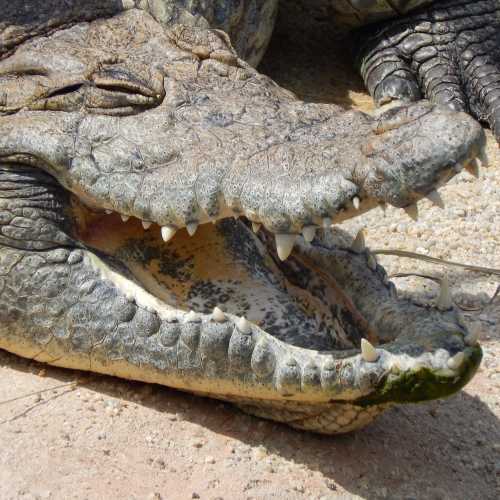How Do Bees Make Honey?
Updated: 28th January 2021
Honey is not only tasty, it is the only food made by an insect that is eaten both by humans and the insect itself (of course, other creatures like to eat honey too, including other invertebrates, mammals and birds).
The method by which bees make honey has been a subject of fascination for hundreds of years. Even the royal beekeeper to King Charles II of England (1630 - 1685) noted that: "A bee is an exquisite chemist!"
Before we go in to detail, let's consider these amazing facts and figures:
- To produce a pound of honey, foraging honey bees have to fly a whopping 55,000 miles!
- That’s a lot of honey bees, working very hard, because each honey bee
will only produce around one twelfth of a teaspoon of honey in its life!
- Oh, and that’s despite the fact that a foraging honey bee visits up to 100 flowers – per foraging trip.
- So no wonder it takes about 556 foraging bees to visit 2 million flowers, just to make a pound of honey!
 Worth remembering: it takes about 556 foraging bees to visit 2 million flowers, just to make a pound of honey!
Worth remembering: it takes about 556 foraging bees to visit 2 million flowers, just to make a pound of honey!
How bees make honey
It is well known that honey is made by a colony of
honey bees living in a nest (in the wild) or in a hive if kept by a
beekeeper.
A typical bee hive will house a superorganism of about 60,000 bees, most of them workers, industriously making honey and the honeycombs in which the honey is stored.
The process of making honey starts with foraging worker honey bees – and flowers, of course. Neither the male honey bees, (the drones) nor the queen honey bee forage for the colony.
As the weather begins to warm up, the bees will begin foraging on flowers. Worker bees have to work very hard to make honey, with endless trips to flowers to collect nectar.
 A honey bee (Apis mellifera) foraging on a Geranium flower.
A honey bee (Apis mellifera) foraging on a Geranium flower.They will usually collect the sweet nectar from
flowers within a radius of around 4 miles, and this nectar will then be taken to the hive.
The bees have glands which secrete an enzyme (which are proteins), known as the 'bee enzyme'. When the bees
collect the nectar, it is then mixed with the enzyme in the bee’s mouth.
 How do bees make honey? Honey bees create amazing honeycombs from beeswax, where they store the honey they make from flower nectar.
How do bees make honey? Honey bees create amazing honeycombs from beeswax, where they store the honey they make from flower nectar.Back at the bee hive or nest, the nectar is passed from one bee to another, further mixing the sweet nectar with the 'bee enzyme'.
This is then dropped into wax cells, called honeycomb. These are hexagonal shaped cells the bees make out of beeswax, and they act just like storage jars, but made of wax.
The bees fan their wings
 Honey bee queen marked by a spot of special white paint, with workers.
Honey bee queen marked by a spot of special white paint, with workers.Initially
the honey stored in the cells is still a bit wet, so the bees fan their
wings over it, which helps the water to evaporate. After some time, the water content is reduced to
around 17%.
Once the honey is ready, at this point the bees will cap the cells - which means adding a layer of wax over the hexagonal shaped honeycomb cells (a little bit like putting a lid on a jar).
Robbing the hive!
Wild colonies of honey bees reserve the honey stored in the combs so they can eat it during the winter months.
However, bees kept by beekeepers in hives have at least part of their honey robbed! Once the bees have capped the honeycomb cells, beekeepers know that the honey is ready, and remove some of the honey.
So, in answer to the question about 'how bees make honey'....
The answer lies in much hard work from honey bees, especially during spring and summer! Honey bee workers born and active during this time will live for around 6 or 7 weeks, whereas those born in autumn may live 4 to 6 months.
Learn more about the honey bee life cycle.
Common questions about bees and honey making
Q: 'How do bees make honey in the winter, when the weather is very bad and there are fewer flower blossoms from which they can gather nectar?'
During the winter the colony will need to continue
feeding around 20,000 workers and a queen.
Honey bees do not go foraging in winter when the weather is very poor and there are few flowers - instead, they eat the honey they made from the nectar they gathered earlier in the year. Honey is their winter food.
What this really means, is that beekeepers are essentially removing the honey bees' winter food stores which they may replace with sugar syrup. However, a fair-minded beekeeper will only take away what the honey bee colony can afford to lose, leaving the rest for the bees themselves.
There
are also times when beekeepers must help honey bees by feeding sugar water
(sugar syrup) - for example, after a poor summer with not enough flowers
or on occasions when bees cannot go out to forage.
All being well, the remaining honey stored in the honeycomb can keep indefinitely for the honey bees to eat when they need it, and when they will not be able to forage. You can help bees by including winter flowering plants and shrubs in your garden.
Q: Do bumble bees make honey?
 Bumble bee foraging on hollyhock flower.
Bumble bee foraging on hollyhock flower.Bumble bees collect nectar and store it for a short time in their honey pots back at the nest.
However, the nectar stores are eaten soon after they have been collected, and do not go through a transformation process to make honey. You can read more about this subject on my page: do bumble bees make honey?
Q: Do other bees make honey?
Yes, Stingless Bees make honey, but not in the same quantity as honey bees, and the honey you purchase in a store will have been made by the honey bee (Apis species).
Q: What are the different types of honey?
Read about the different types of honey.
Wacky Fact!
Did You Know?
Male honey bees (drones)
have no father, but they do have a grandfather!
Does that sound impossible? Read:
References
Lewkowski O, Mureșan CI, Dobritzsch D, Fuszard M, Erler S. The Effect of Diet on the Composition and Stability of Proteins Secreted by Honey Bees in Honey. Insects. 2019;10(9):282. Published 2019 Sep 2. doi:10.3390/insects10090282
If you found this page helpful or interesting, I'd really be grateful if you would share it with others - if not this page, perhaps another, such as Gardening For Bees.
Thank you so much :) .


